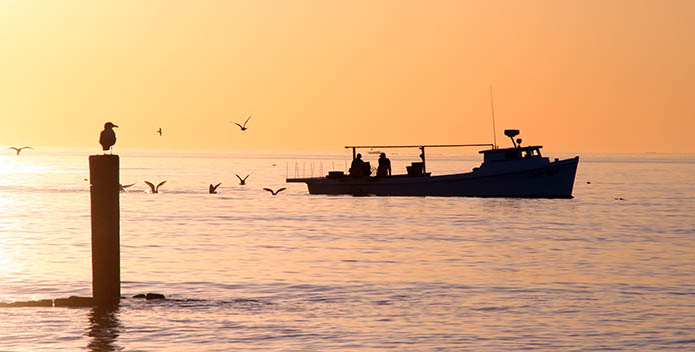A series of four agreements dating to 1983 have guided the cleanup of the Chesapeake Bay. From the beginning, the agreements emphasized the importance of shared responsibility between the federal government, states within the Bay watershed, and the District of Columbia. No other approach would work, given that the Bay drainage area stretches 64,000 square miles over six states.
The first agreement in 1983 was a simple, one-page pledge signed by the governors of Virginia, Maryland, and Pennsylvania, the mayor of the District of Columbia, the chairman of the Chesapeake Bay Commission, and the administrator of the U.S. Environmental Protection Agency (EPA).
A subsequent Chesapeake Bay Agreement in 1987 set the first numeric goals to reduce pollution and restore the Bay ecosystem. The third Agreement signed in 2000 expanded and clarified goals, and included participation by headwater states: Delaware, New York, and West Virginia as well as the original jurisdictions.
But the early agreements were voluntary in nature, without little accountability. Those agreements produced some progress, but the states and District came up well short of their own pollution reduction goals. By 2009, all participants realized a new type of approach was necessary, one that held participants to their promises.
In December 2010—after years of missed deadlines for restoration and no consequences—the EPA exercised its Clean Water Act authorities by releasing enforceable pollution limits for nitrogen, phosphorus, and sediment pollution in the Chesapeake Bay (the Bay TMDL). Subsequently, the six Bay states and the District of Columbia released their plans, called Watershed Implementation Plans or WIPs, to meet those limits by 2025. Together the pollution targets and the states' plans comprise a Clean Water Blueprint for the Chesapeake and its rivers and streams.
But saving the Bay means more than just less pollution. It means healthier fish and oyster populations, improved habitat for wildlife, cleaner water and healthier ecosystems upstream as well as in the main stem of the Bay, and other goals. In 2014, representatives from the entire watershed signed Chesapeake Bay Watershed Agreement. For the first time, Delaware, New York, and West Virginia committed to full partnership in the Bay Program. The agreement includes the Chesapeake Clean Water Blueprint goals, but also established goals for habitat restoration and conservation, improving fisheries, increasing public access public access, and environmental literacy.
Specifically, the the 2014 Chesapeake Bay Watershed Agreement identified critical goals within five themes:
- Abundant Life: Ensure sustainable populations of finfish, shellfish, and other living creatures; the restoration of habitats where those creatures live and feed; and a balanced ecosystem network.
- Clean Water: Reduce nutrient pollution to achieve water quality that can support aquatic life; free the Bay and its tributaries from the effects of toxic pollution, not just nutrients; and sustain healthy sub-watersheds.
- Climate Change: Increase the resiliency of the Bay and tributaries to withstand changing weather and the impacts it will bring.
- Conserved Lands: Conserve working forests, farms, maritime communities, and lands with cultural and other values.
- Engaged Communities: Increase public involvement in Bay stewardship; expand public access to the Bay; enable environmentally literate students to graduate from high school.
The 2014 Agreement sets 2025 as a deadline to achieve the goals. A mid-point assessment in 2017 found significant progress in reducing pollution, achieved largely by relying on nutrient reductions from sewage plants. But the assessment found polluted runoff from suburban and urban areas increasing, and also found Pennsylvania lagging behind the other states in general.
Progress in achieving some of the Agreement goals has been mixed. For instance, large-scale oyster restoration projects were successful in Maryland and Virginia, yet funding has fallen off dramatically. Some school districts are making great strides in helping their students become environmentally literate, while many others are making little progress.
Clearly, the Bay agreements represent an evolving effort to turn aspirational goals into actual results.
Find out more about the Chesapeake Bay Watershed Agreement on the Chesapeake Bay Program website.



